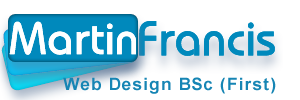Getting ready for organisational analysis
Situational Variables
Definition: aspects of organisations themselves that people know about
Financial: Income statements, management accounts, cash flow forecasts - will impact IT budget scale, scope and timing of projects
Organisational chart – will indicate key stakeholders within the organisation who need to be engaged in the IT project
Current Organisational Systems: Documentation, work procedures, training records, are they ISO9001 certified? will impact whether IT project needs to be ISO compliant too.
Nature of business – to help understand the big picture and how IT fits the organisation business needs:
- Types of market – products, services, they provide and plan to provide
- Customers, suppliers, people they depend on outside of their business.
- Competition e.g. what sort of IT systems do the competition have in place, may shape their expectations if their closest competitor has upgraded, might be the trigger for this project
Age and general demographic of staff, level of skill and training – users need to be able to use the system!
Physical – Location/ locations of organisation e.g. head office, regional offices, could raise key challenges or make some IT solutions unfeasible
Physical Layout of offices/factory e.g. where is their data centre, are they ethernet wired? What type of broadband connection? Do they have WIFI access points installed
History of organisation and IT systems, important to understand legacy
Existing Hardware and Software used
Existing Company website and Computer Languages used
Deficiencies and shortcomings of their own systems – key to an IT project fit for purpose
Fact–finding, modelling or analysis techniques
Definition: processes that inform you understanding and analysing organisations
Fact-finding: Primary Research
Ask Employees/ Management/ key stakeholders e.g. customers, end users
- Interviews
- Questionaires
Over Shadowing
Observation
Fact-finding: Secondary Research
Google Search
Company Accounts
Industry Market Reports eg. Mintel, TNS Sales data
Modelling and Analysis Techniques
IT Systems
- Flow Chart
- System Map
- DFD‘s
- Entity Modelling
- Rich Pictures
- ER diagrams
- WS Framework
Understanding the nature of business
- SWOT analysis
- Stakeholder analysis
- Porters 5 forces
- Feasibility studies
- Business case modelling – test the financial viability of the IT project to get it past the Board!
Key Comments
1. Listen
- Listen to the client about their business and their existing ICT set up.
- Listen to the client about their goals and future aspirations along with what their requirements are as they see them
- Listen to the key problems with their current systems
2. Investigate
- After listening to the Client we will use the appropriate modelling and analysis techniques to gain a further understanding of their business.
- These techniques applied will depend also on what they have and have not told use or can and can not or tell us about their business.
3. Use the Information Intelligently
- To propose a solution that was more than what the client could have thought of.




